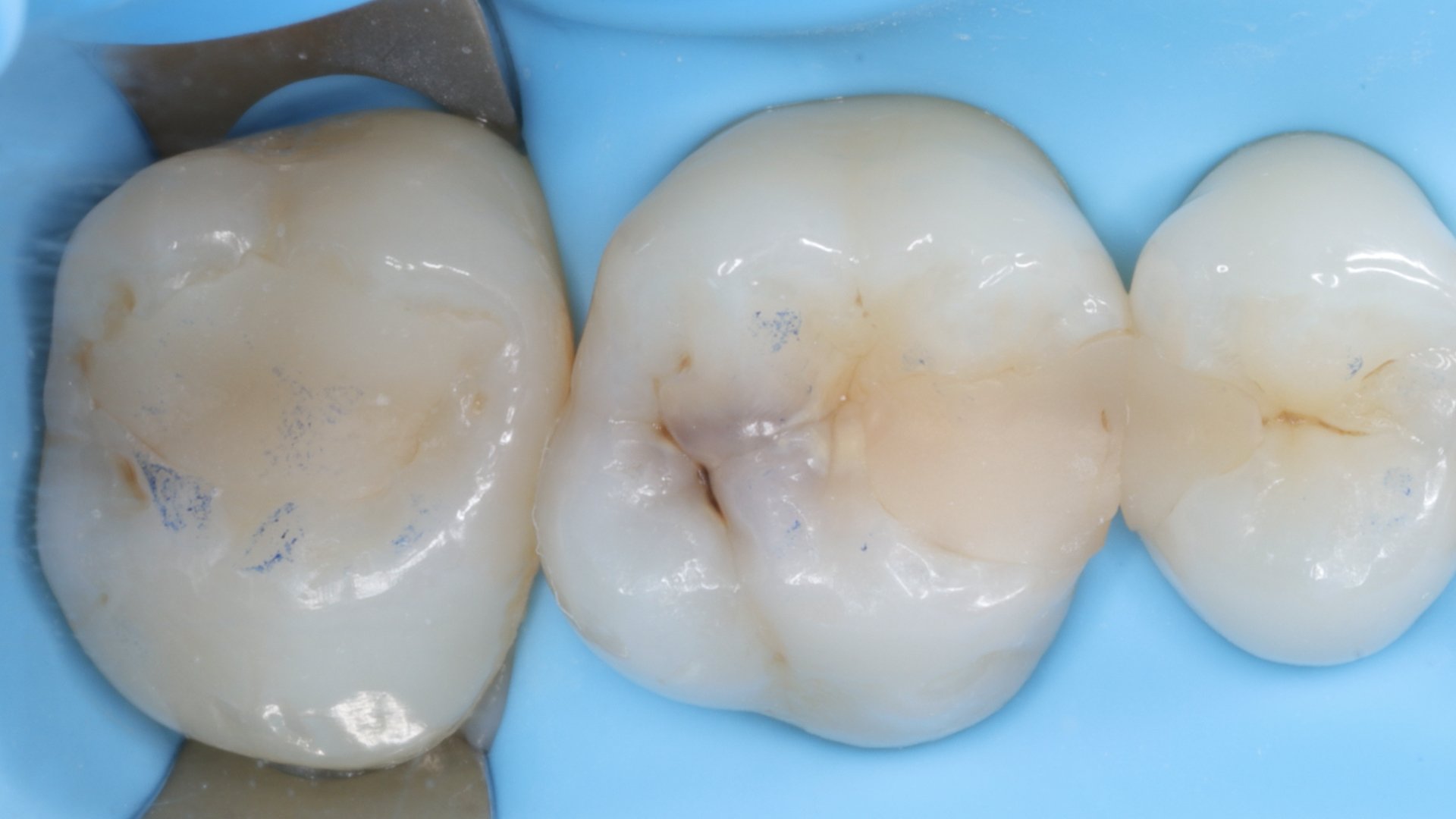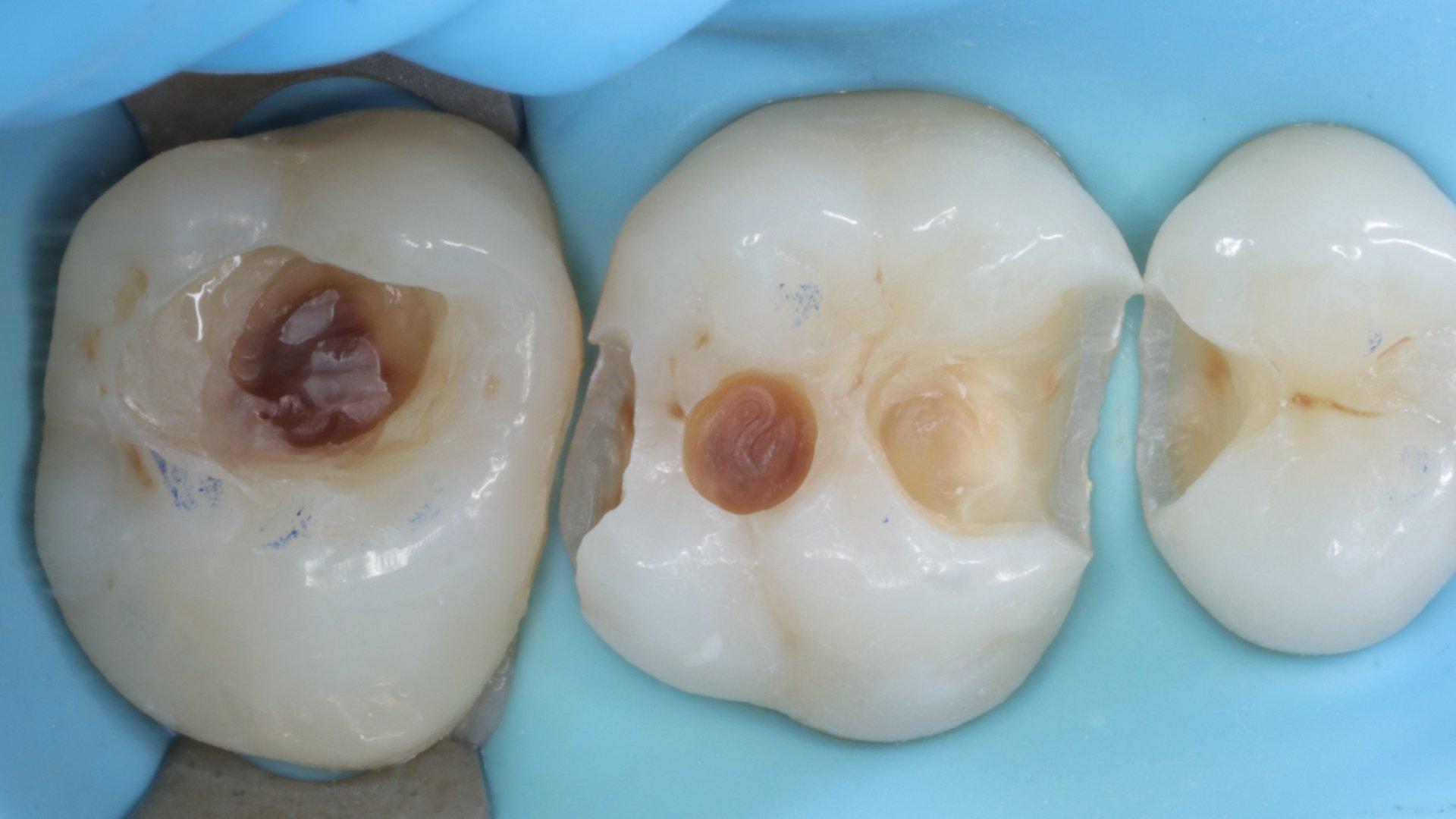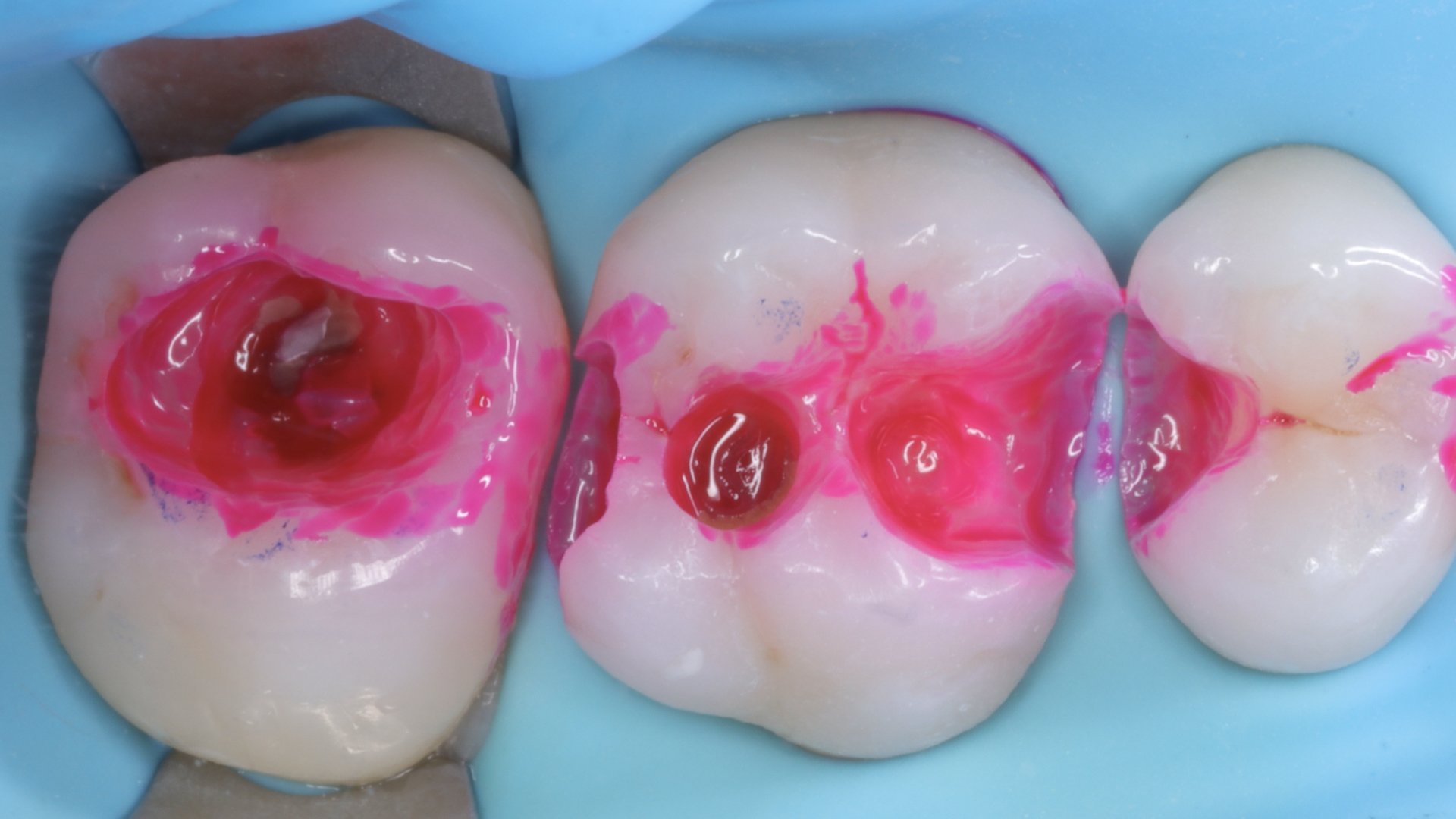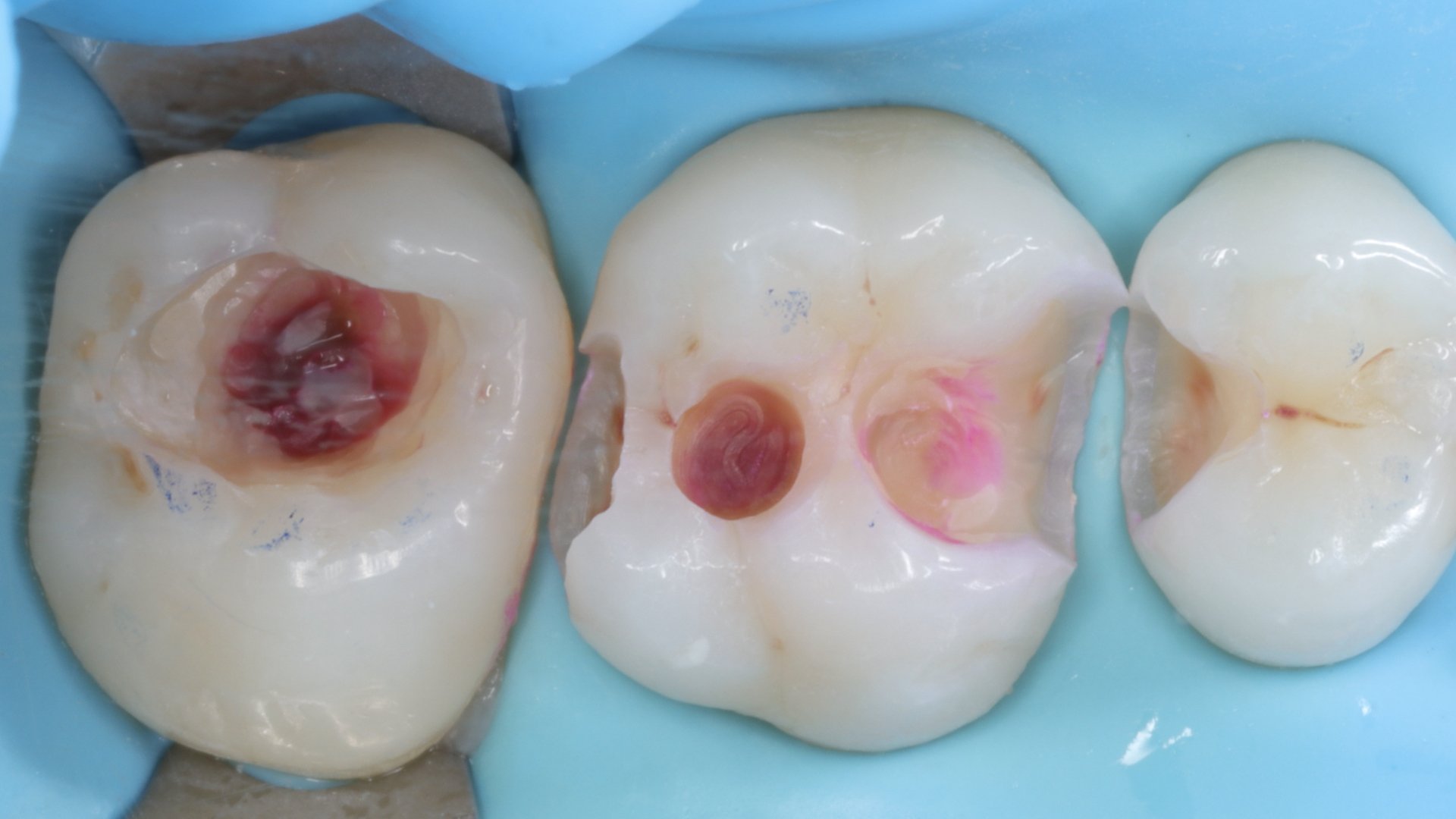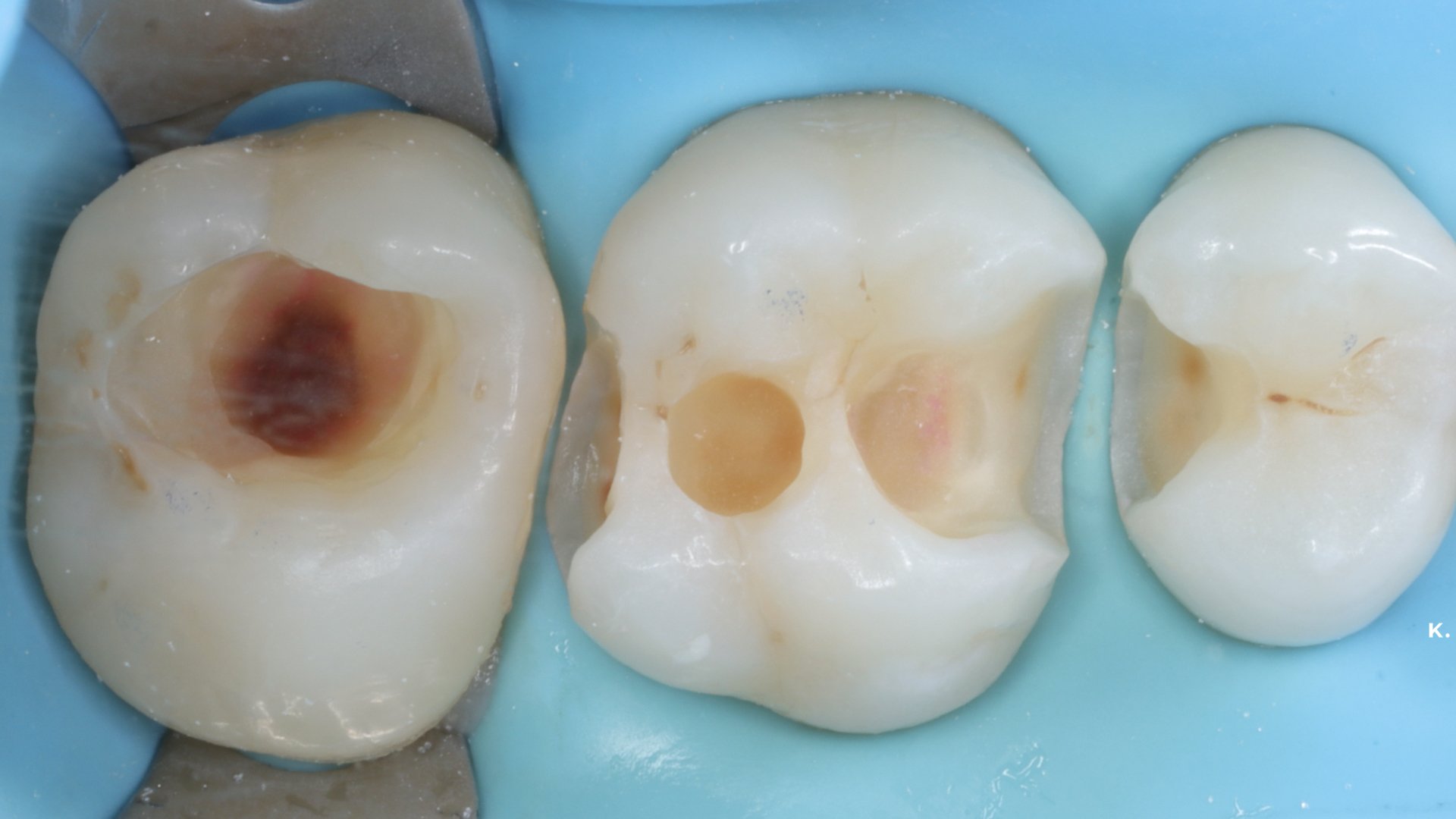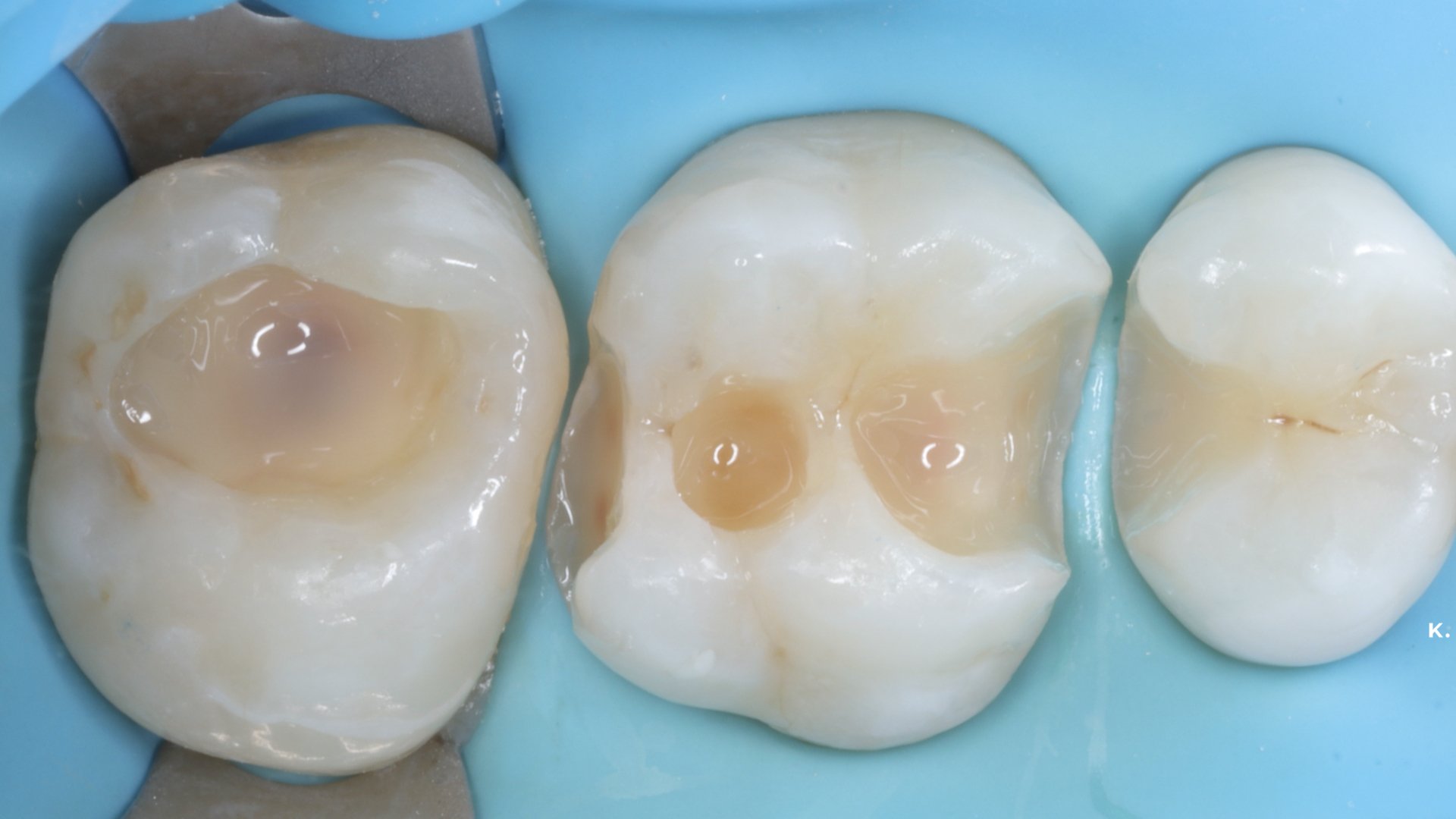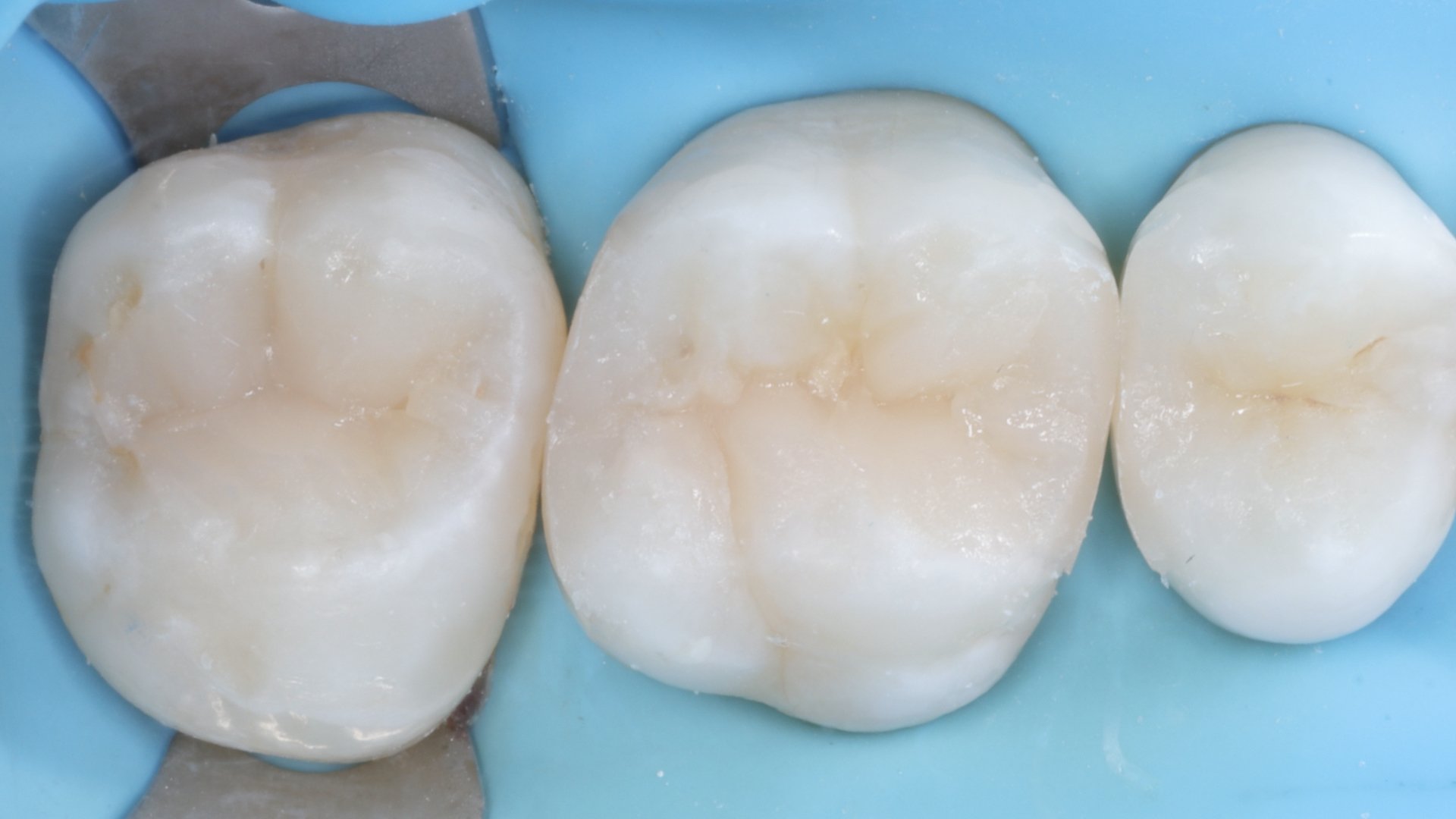Posterior Composites
This adult patient consulted me to restore his posterior teeth. He had multiple old glasionomer restorations and some caries lesions. In this case I’ll show you how I restore posterior teeth with direct composite to make them look as natural as possible.
Initial photo
Before the start of each treatment a photograph from the teeth is taken.
Rubberdam isolation
In order to get the best possible bonding to the tooth and to make sure we have a really clean operator field I use rubberdam isolation in all composite cases.
Removal of the old restorations and decay
The old restorations and decay is removed as good as possible. During each treatment high magnification (8.8x or higher) is used in order to get the best result.
Caries detection dye
This dye is pink and will only highlight soft/decayed tooth structure.
Result after caries detection dye
All the pink staining on the outside of the tooth needs to be removed. In cases where we have deep decay we will leave the pink staining in the center of the tooth in order to avoid the need of a root canal treatment.
Air abrasion
At the end of the preparation phase the teeth are cleaned with air abrasion to get the best possible substrate for bonding.
Immediate Dentin Sealing (IDS)
A first layer of composite is placed as a protective barrier and to promote optimal bonding to the tooth substrate.
Layering of the tooth
A tooth is always reconstructed in small layers of composite to ensure the best possible bonding and optimal result. If the layers are too thick, this can lead to shrinkage and post-op sensitivity.
Anatomy
It’s my goal to always try to restore the tooth in its original form, function and strength. This means we will reconstruct the original anatomy of the tooth.
Hyper-realism
In some cases the fissures (the deepest parts of the tooth) are highlighted with a darker tint in order to create some depth and hyper-realistic composite restorations.
Polishing and final check
After polishing the rubberdam is removed and the occlusion is double checked. Small corrections are made if needed. In most cases the patient is anesthetized and can’t really feel if the bite is okay. If unsure we can always make some small corrections after a few days when the anesthesia wore off.
Please note: the results of this treatment may vary from patient to patient. Your own treatment may differ from what’s prescribed here. During the intake we will discuss different treatment options and discuss what’s best for you and what you can expect.

